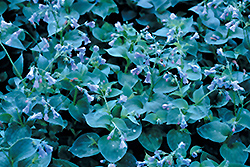Fri & Sat 8am - 8pm
Sun 8am - 7pm
Anytown, USA 12345
fax: 261.787.0463
e-mail: info@successgc.com


Plant Finder

Plant Height: 12 inches
Flower Height: 24 inches
Spread: 16 inches
Sunlight:
![]()
![]()
Hardiness Zone: 1b
Description:
A delicate looking member of the borages, this hardy bluebell from Siberia features intense blue flowers which hang in small clusters from the erect flower stalks; tends to go dormant in summer, excellent for woodland plantings
Ornamental Features
Siberian Bluebells features dainty nodding blue bell-shaped flowers at the ends of the stems from late spring to early summer. Its attractive pointy leaves remain powder blue in color throughout the season.
Landscape Attributes
Siberian Bluebells is an herbaceous perennial with a mounded form. Its medium texture blends into the garden, but can always be balanced by a couple of finer or coarser plants for an effective composition.
This plant will require occasional maintenance and upkeep, and should not require much pruning, except when necessary, such as to remove dieback. Deer don't particularly care for this plant and will usually leave it alone in favor of tastier treats. It has no significant negative characteristics.
Siberian Bluebells is recommended for the following landscape applications;
- Mass Planting
- General Garden Use
- Groundcover
- Naturalizing And Woodland Gardens
Planting & Growing
Siberian Bluebells will grow to be about 12 inches tall at maturity extending to 24 inches tall with the flowers, with a spread of 16 inches. Its foliage tends to remain dense right to the ground, not requiring facer plants in front. It grows at a medium rate, and under ideal conditions can be expected to live for approximately 5 years. As an herbaceous perennial, this plant will usually die back to the crown each winter, and will regrow from the base each spring. Be careful not to disturb the crown in late winter when it may not be readily seen! As this plant tends to go dormant in summer, it is best interplanted with late-season bloomers to hide the dying foliage.
This plant does best in partial shade to shade. It prefers to grow in average to moist conditions, and shouldn't be allowed to dry out. It is not particular as to soil pH, but grows best in rich soils. It is somewhat tolerant of urban pollution. This species is native to parts of North America. It can be propagated by division.
